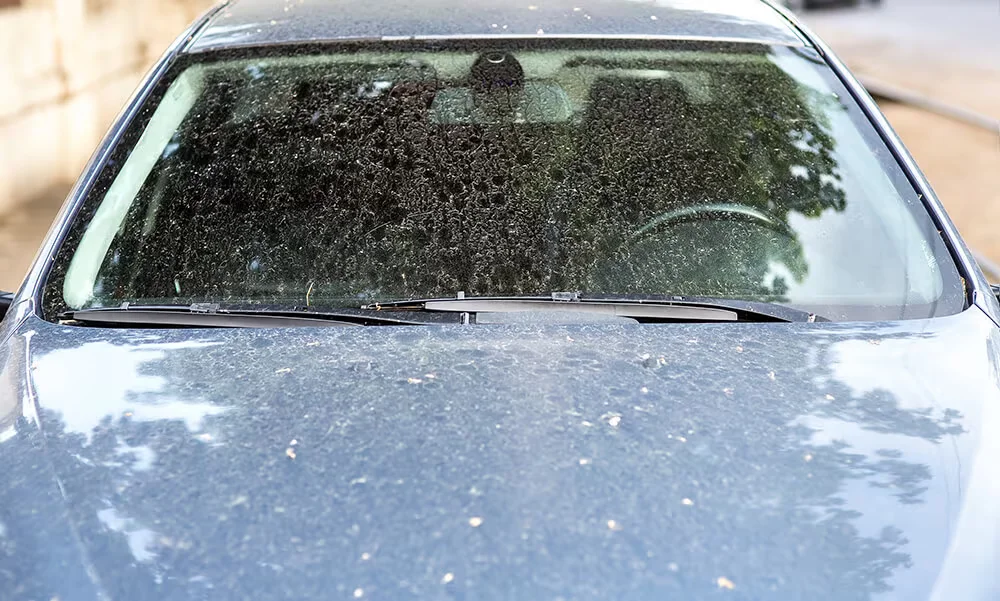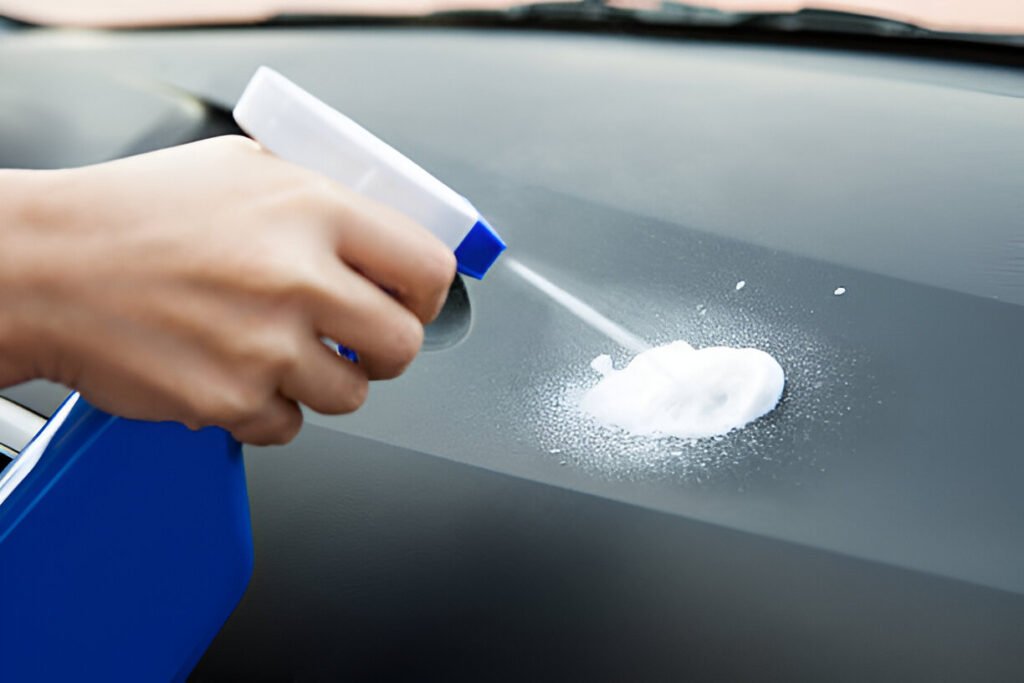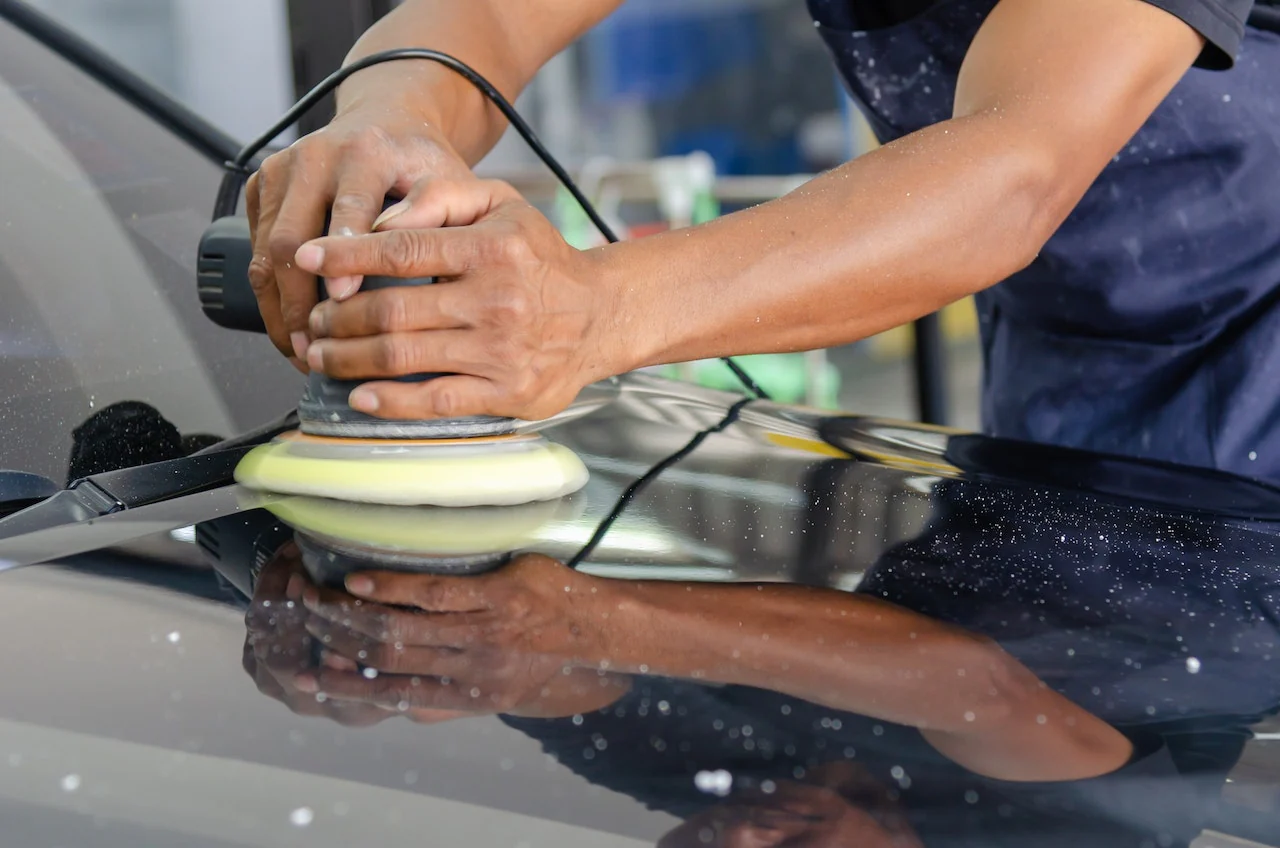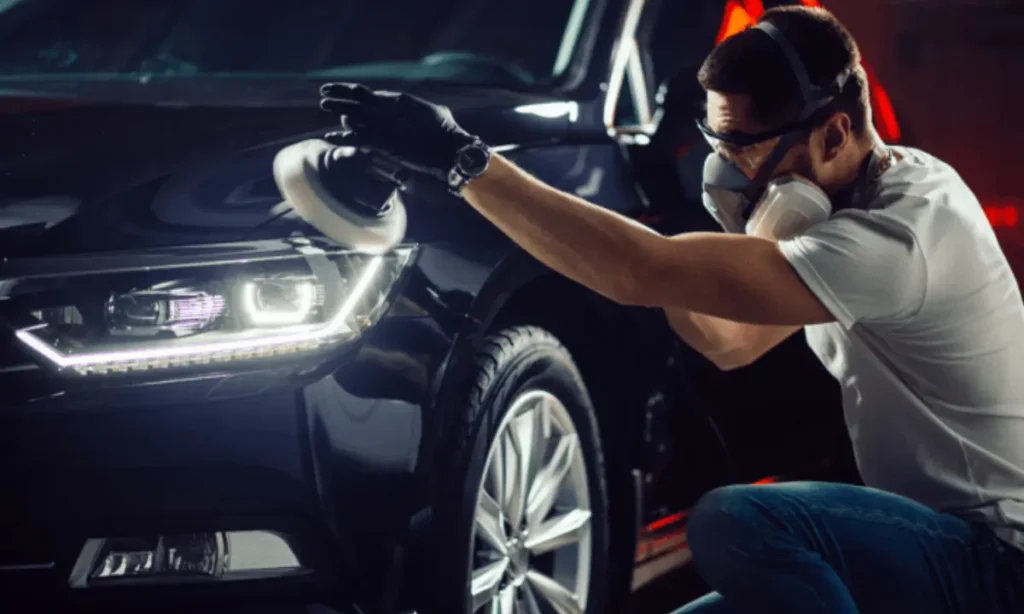A water spot might look harmless at first sight — just a cosmetic issue, right? But they can be visible in your car’s clear coat and eat away at paint, if left untreated. Water marks, whether from rain, hard tap water deposits, or improper washing, are among the most common (and frustrating) challenges our cars have to battle. This guide will show how to get water spots off a car, make sure they never come back.
What Are Water Spots and Why Do They Stick Around?

Water spots are created when water evaporates on your car’s surface, leaving behind mineral deposits (especially from hard water) or acidic residue (from rain or sprinkler systems). They bond with the clear coat over time and can only be removed with basic car washes.
3 Types of Water Spots:
- Type I: Mineral deposit (common)
- Type II: Clear coat etching.
- Type III: Permanent Bonded contaminants (containments that permanently bond to the paint) cannot be removed by clay, can be commonly mistaken for bird droppings or bug transfer.
Knowing what you’re up against dictates the proper way to remove water spots from a car, because not all spots are created equal.
1. Wash Your Car Thoroughly — The Right Way
Many people go straight to polish or vinegar. Big mistake. How to Get Water Spots Off a Car. The first step to remove water spots on a car is to wash it. This will ensure you’re not grinding extra dirt into the paint.
Use:
- pH-balanced car shampoo
- A microfiber mitt
- Two-bucket method (one for soap, one for rinse)
And steer clear of dish soap or household cleaners — they strip away wax and could harm paint. Dry using a fresh, dry microfiber towel so the splatter paint will not form new spots as it dries.
2. Try White Vinegar (For Fresh, Non-Etched Spots).
If the water marks on your car are newer or non-etched, distilled white vinegar is a safe, cost-effective and natural DIY method.
Method:
- Combine 1 part distilled white vinegar with 1 part distilled water in a spray bottle.
- Spritz the stains and allow them to sit for about 2-3 minutes.
- Gently blot with a clean microfiber cloth.
- Wash off with water and pat dry.
This method is great for getting rid of hard water spots on a car, as long as they haven’t embedded themselves too deeply.
Note: Be sure to spot test vinegar on a small, hidden area first. Don’t fire /use it under the sun.
3. Use a Water Spot Remover Product (For Stubborn Spots)

If vinegar alone doesn’t do the trick, it’s time to call in the professionals for a specialized car water spot remover. They use formulated materials to dissolve mineral scale without damaging the clear coat.
What to Look For:
- pH-neutral formulation
- Safe for paint and clear coat
- Easy application (spray or gel)
Use as directed — typically you spray, wait and then wipe with a microfiber towel. The latter tends to work better when removing water spots from a car’s paint.
4. Clay Bar Treatment (For Bonded Contaminants)
Still spotting after washing and treating? You might have Type III water spots (bonded contaminants). Here, a clay bar process can remove them from the paint.
How to Use:
- Wash and dry the car first.
- Apply a clay bar lubricant, or detailer, to lubricate the surface.
- Gently move the clay bar back and forth on the contaminants.
- Wipe clean and dry.
Clay bars work very well at eliminating water spots on cars that regular washing won’t touch. They also leave your paint feeling silk-smooth.
5. Polish the Surface (For Etched Water Marks)
If water spots are not treated well, such as water spots in direct sunlight, the water can actually etch into the clear coat and leave a dull etched stain. When it does, polish is your savior.
What You’ll Need:
- Dual-action (DA) polisher or hand applicator pad
- Paint-safe polish (not compound unless severe damage)
- Microfiber towels
Take a small amount of polish to a small section and rub it in softly. Buff off with a clean towel. It provides clarity to paint that has been damage by more serious water marks.
6. Seal or Wax the Paint (To Prevent Future Water Spots)
Don’t skip this step if you want a newly-clean and spot-free car protection. Wax or paint sealants create a shield that mineral deposits can’t penetrate.
Recommended Products:
- Synthetic adhesives (lasting far longer)
- Carnauba wax (higher shine but shorter lasting)
- Ceramic spray coatings (best for your daily drivers)
Sealant should be used about every 3–6 months, depending on weather and usage of the car. This is an important step if you are trying to figure out how to avoid water spots on a car long term.
Bonus tip: Remove Water Spots on Car
If you live in a hard water area, your tap water is the culprit. The best step now to use distilled water for the final rinse after you wash your car. This is a really amazing drop in mineral collection and hard-water spotting to potentially clear surface.
Conclusion
Water spots are more than an annoyance — it is a warning sign your car is not being protected. The key is to take action quickly and have the right tools — and never skip the final step of protection. Follow the guide and you will not only get water spots off your car but prevent them from returning.
FAQs
Rough patches are typically the result of hard water, which contains minerals, including calcium and magnesium. These minerals are left behind when the water evaporates, adhering to the surface.
For fresh spots, a vinegar and water solution may be fast to act. For more stubborn stains, it’s best to use a specific water spot remover or a clay bar treatment.
It can—Type II spots can actually eat into your clear coat. If not, they can cause irreparable paint blemishes that need professional treatment.
Always blot the car dry right away with a microfiber towel and use distilled water for the last rinse. Keep a nice coat of wax or a sealer on your paint at all times.
Yes, in moderation. Whitewash (½ cup with ½ cup water) is great for a little water spot cleaning. Do not ever use it undiluted or on hot surfaces.




